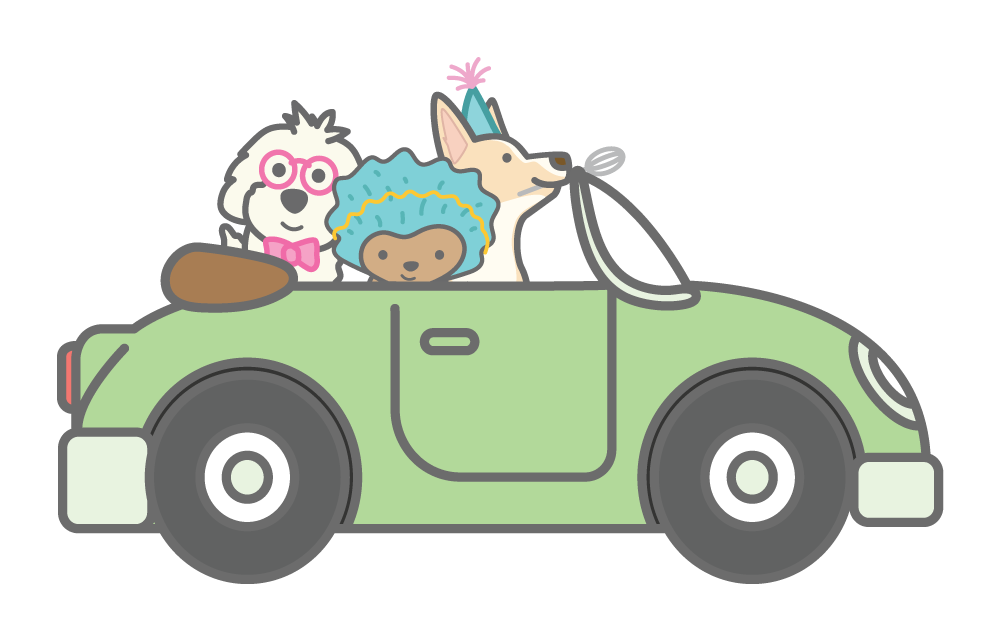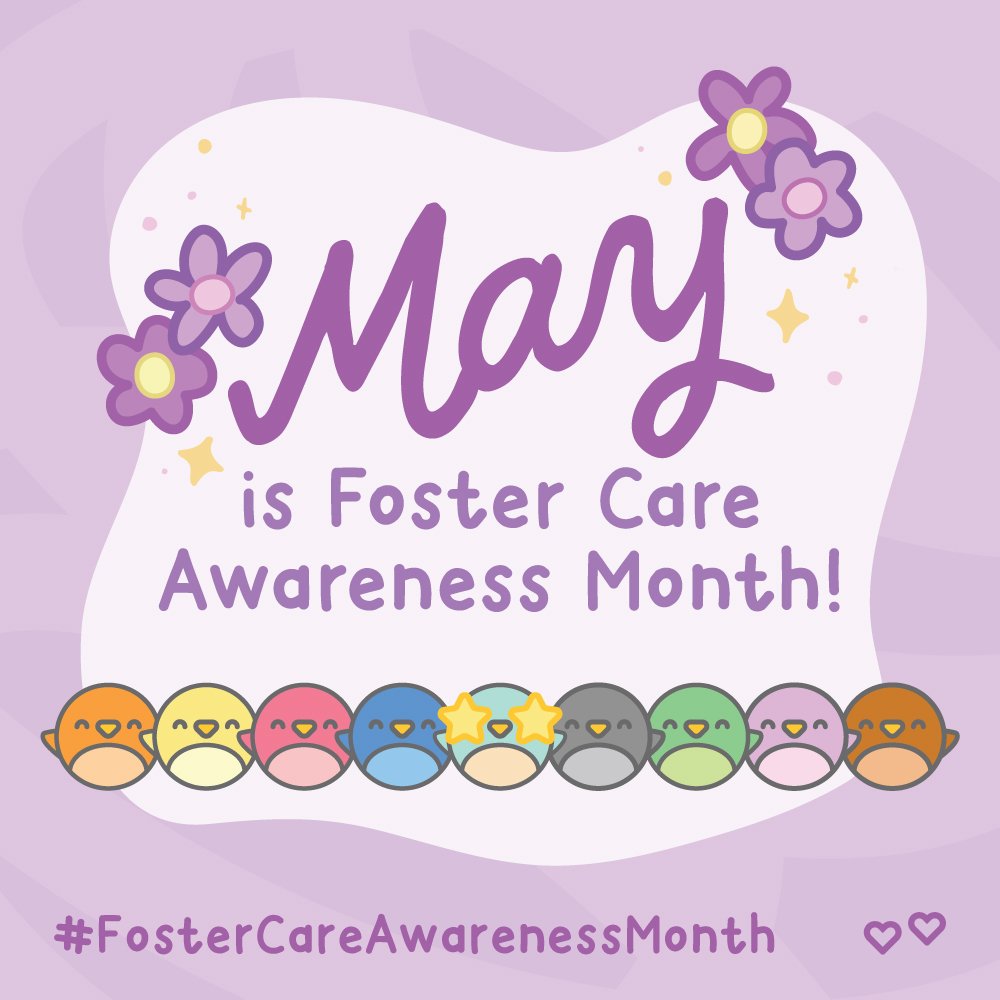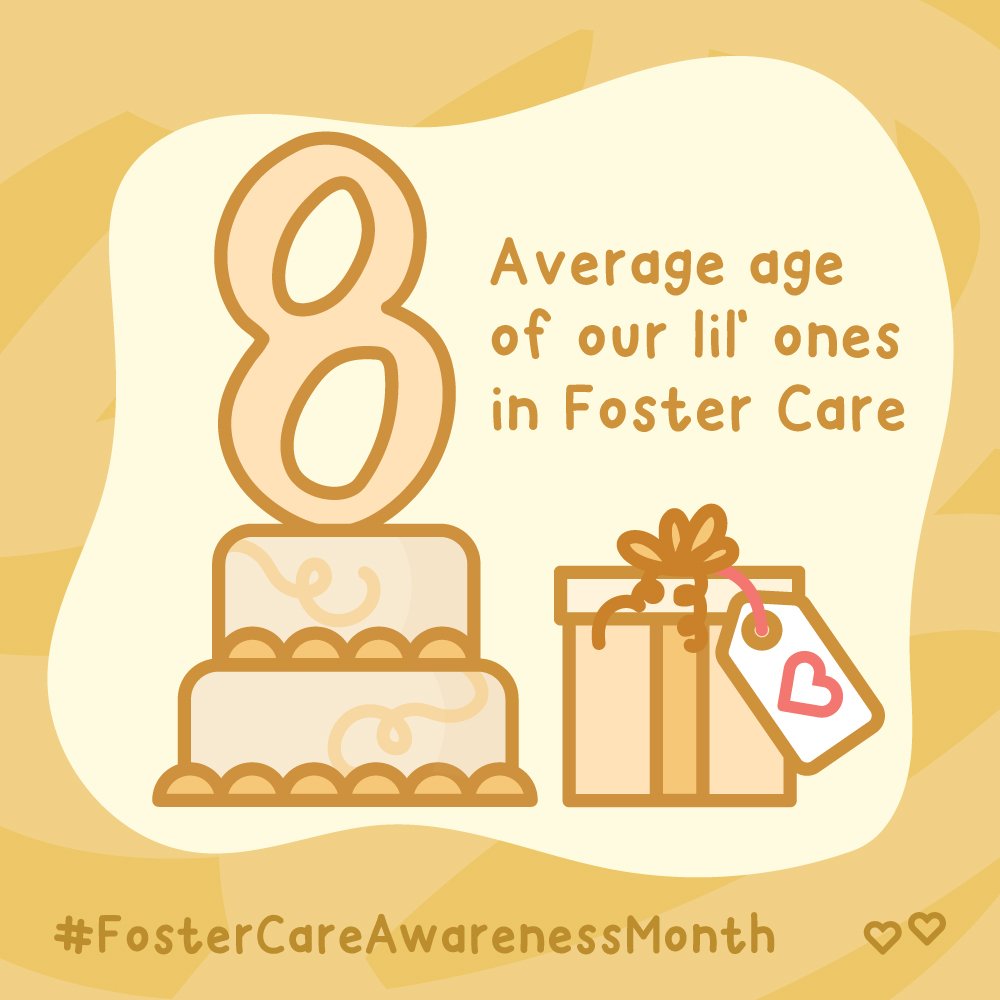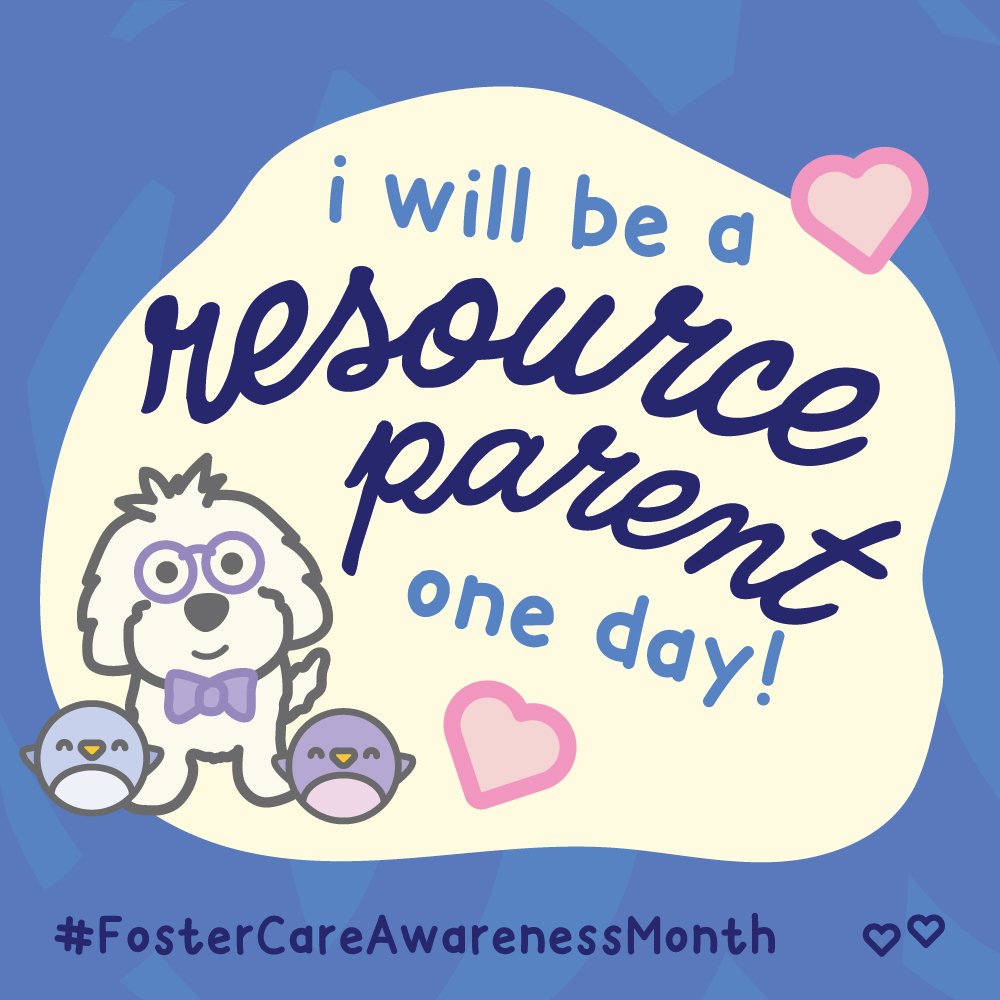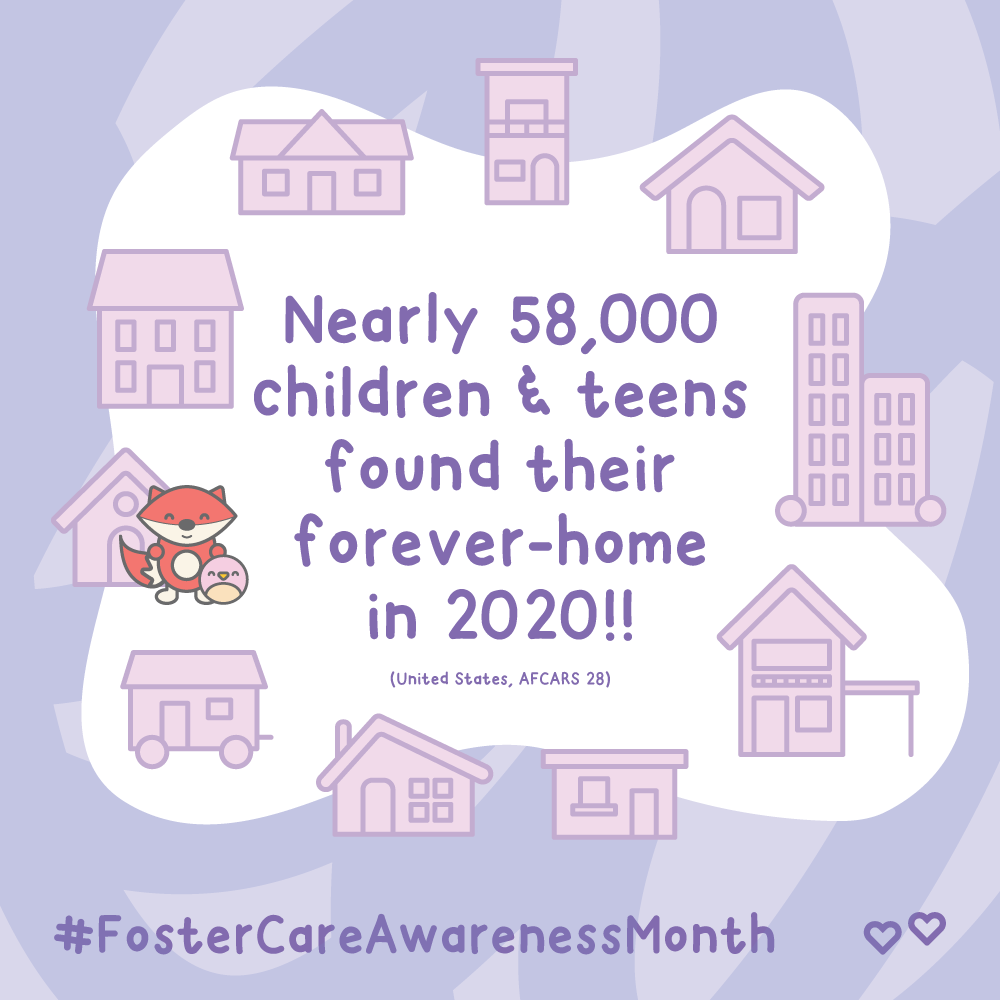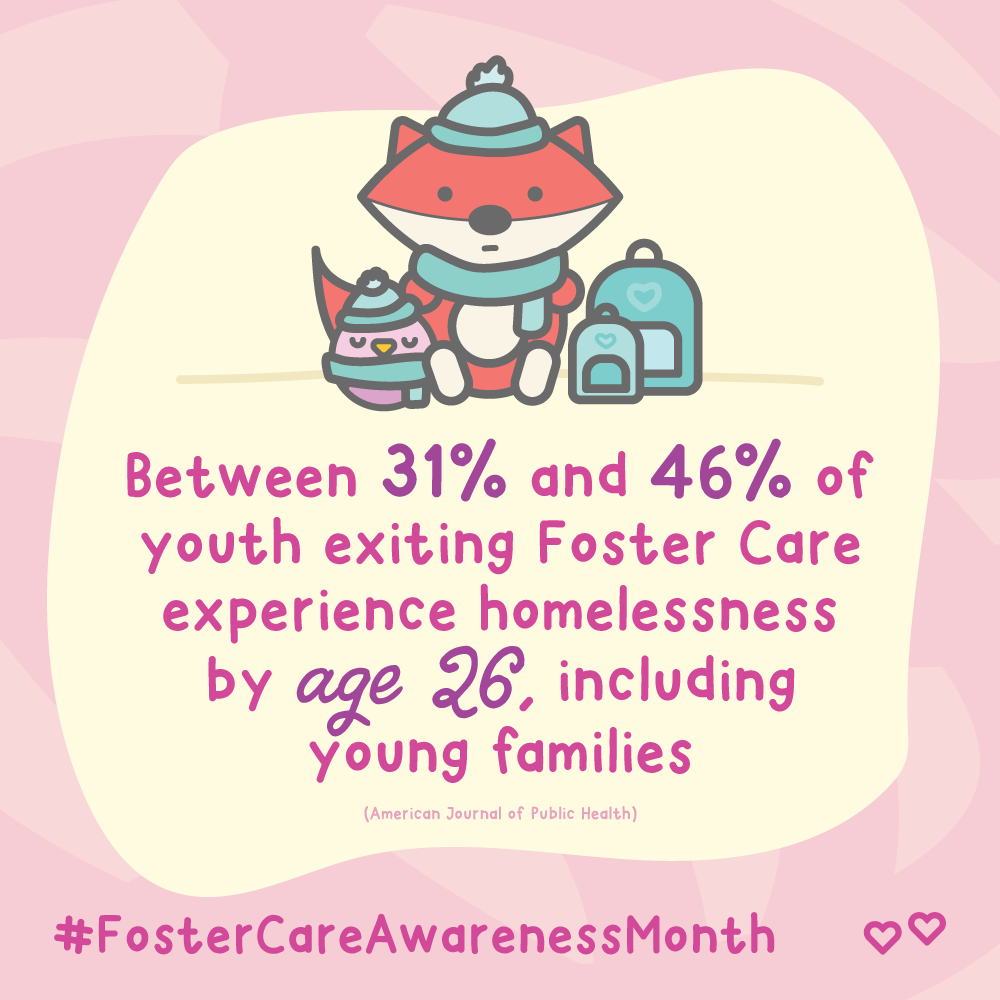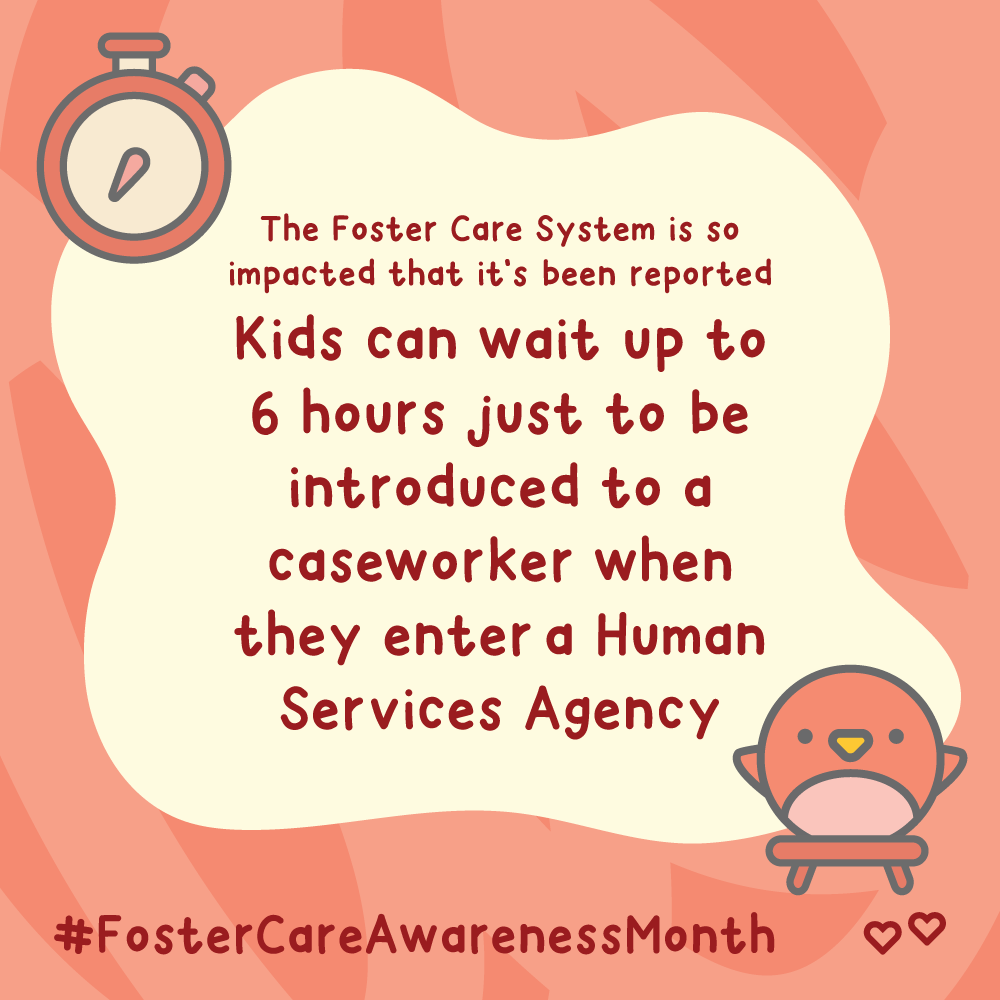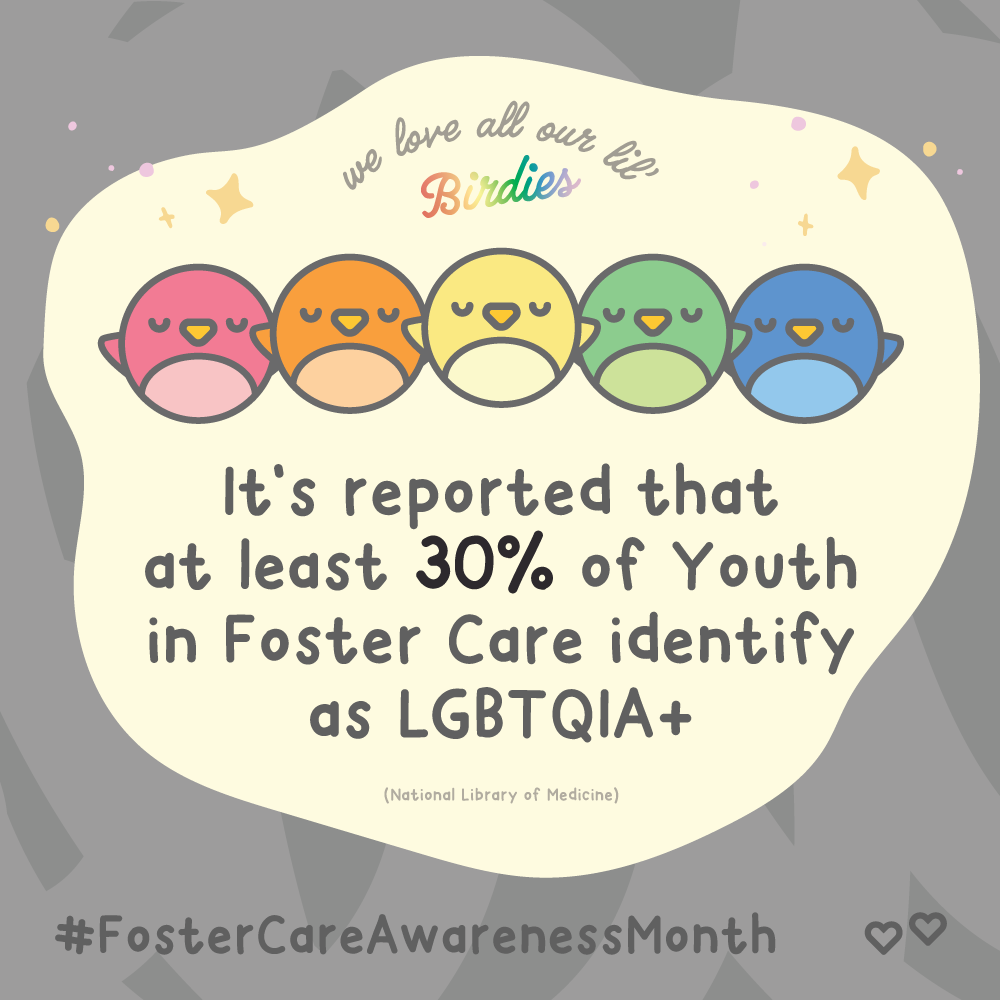LET’S LEARN TOGETHER!
In the past 10 years with the advancements of the internet and technology, it’s been easier and easier for us to connect and meet with each other as a global society, rather than being a small village, town, or city. Because of the vast amount of change that’s happened in only the span of a decade, it’s quick to get lost in all the new vocabulary and ideas that are being introduced on almost a daily basis. While the staff at For Goodness Cakes has some training in social work and trauma-informed care, we are also learning right alongside you all with how to approach these new (and, sometimes, heavy) topics. So come learn with us as we navigate the new global world together :)
RATED PG-13 * SOME HEAVY TOPICS DISCUSSED *
JUST A NOTE
〰️
JUST A NOTE 〰️
We haven’t finished this page, but we want it to go up so we can start learning together!
If you see words that are not defined yet, rest assured, we’re working on that and
this page will be more complete in the next month or so :)
WHAT IS DIVERSITY, EQUITY, AND INCLUSION (DEI)?
Diversity, Equity, and Inclusion, very simply put, is making sure everyone is invited to the party, everyone gets a seat at the table, and everyone gets to enjoy the cake!
It goes much deeper than that, but that’s our overall goal - to make sure everyone is able to have a home, to have a loving family, and to have their personal wants and needs met (if they so choose). This will look different for everyone - as everyone has different wants and needs. This process involves learning from others, practicing empathy, overcoming fears, and dismantling some laws and systems in place that were meant to hold certain collective groups of people back from being able to do so and creating new laws and systems to better serve all of us! Imagine what our world would be like if everyone was able to receive top notch physical, medical, mental, emotional, and spiritual care, as they so chose, without having to worry about shelter or where their next meal was coming from. What an amazing thought! Let’s put those dreams into action :)
Here is a great example of what the process of DEI wants to solve, from the San Diego County Bar Association’s blog:
EVERYONE GETS A SEAT AT THE TABLE,
AND EVERYONE GETS A PIECE OF THE CAKE! WHAT A PARTY!!! 🥳 🎉 🥳
A QUICK NOTE:
This page is loooong and full of vocabulary, definitions, scenarios, and how it fits into the For Goodness Cakes and foster youth/youth facing adversity world. Please feel free to just read a few words and definitions and come back in a few days to learn a few more. Taking some time and space to digest on the meaning of all of this is 100% encouraged!
If there is anything we misspoke on, please let us know! There’s a form at the bottom of the page that lets you send in suggestions or corrections. We are learning too – and that means making mistakes as part of the process. We apologize in advance if we missed something! We have vetted this through six DEI humans so we’re hopeful that it’s accurate - but you never know, as time goes on, things may change too :)
Thank you for being a part of changing the world for the batter!
FOR GOODNESS CAKES-SPECIFIC
GLOSSARY OF TERMS
GENERATIONS
• • • • • Gen(eration) Alpha
People born between 2013 and 2024. These are our newest Sprinklers on the planet! Some aren’t even born yet for this generation. YouTube had already existed for 8 years when the oldest people in this generation were born.
• • • • • Gen(eration) Z
AKA Zoomers, these people were born between 1997 and 2012. This generation was in elementary school when YouTube came out. This is also the largest generation of non-binary identifying humans to date. See below for more on that term.
• • • • • Millennials
We bet you’ve heard this term before! These people were born between 1985 and 1996. This generation was in middle/high school when YouTube came out.
• • • • • Gen(eration) X
These people were born between 1965 and 1984. This generation was in their 20s-30s when YouTube came out.
• • • • • Boomers
These people were born between 1946 and 1964. This generation was in their 40s-60s when YouTube came out.
Why the YouTube comparison? Because it’s important to factor in how much accessibility each generation had to the “modern internet and technology” as they were growing up. Our global society has shifted fundamentally with instant access to new ideas, stories, approaches, and techniques for learning and education, and it’s only come to pass (at this ⚡️lightning speed⚡️) within the last 10-20 years or so. YouTube was created in 2005.
SOCIAL WORK
• • • • • People-First Language
People-first language, also called person-first language, is a type of linguistic prescription which puts a person before a diagnosis, describing what condition a person "has" rather than asserting what a person "is.”
Instead of Jane is autistic, we say Jane has autism
Instead of Jenny was homeless, we say Jenny has experienced homelessness
Instead of David is a drug addict, we say David is experiencing substance-use disorder
Instead of Sam is suicidal, we say Sam is experiencing suicidal ideation because of untreated chronic depression
• • • • • Foster Care
A temporary service for kiddos (ages 0-17 in most states in the U.S.) who cannot live with their birth parents. Infants, children, and teens in foster care may live in group homes, residential care facilities, emergency shelters, supervised independent living, or with relatives or unrelated foster or resource parents.
• • • • • Alternative Care
[This is one of the definitions we’re waiting on for our DEI humans to approve. Go ahead and just skip right over this one for now, come back in a few weeks to learn more!]
• • • • • Temporary Housing, Emergency Shelter, or (slowly phasing out the term) Homeless Shelter
A type of service agency that provides temporary residence/shelter for individuals and families experiencing homelessness.
This is a slow phase out of the term “Homeless Shelter” because there are many, many, many organizations across the country that have the term “Homeless” in their names, which requires an overhaul of the entire organization. Nonprofit agencies don’t have too many resources to go into redoing marketing, collateral, website building, securing domain names, and all that, so you’ll likely see this shift happen over the next 10 years or so. Hopefully by then, our society will have secure, stable housing for everyone! * wishes on a star ⭐️ *
• • • • • Housing Insecurity / Houseless / Unhoused / or (slowly phasing out the term) Homelessness
Housing insecurity can have many definitions, but the broad scope is that there is no permanent living situation and the individual or family does not know where they’ll be sleeping that night or later that week. People can experience housing insecurity from a single night, say, if the parents kicked their teenager out of the house after a fight. Or people can experience chronic houselessness which can be periods of several months to several years of unstable or zero shelter. Most people in America are one missed rent payment, one job layoff, or one bad health issue away from experiencing housing insecurity or being unhoused. This is not due to the individual who fell into crisis, it is due to a lack of social safety nets and wealth inequality/disparity. As of January 2023, more than 50,000 tech workers have been laid off and, if they do not find jobs, they may be months or weeks away from experiencing housing or food insecurity. It can happen to anyone.
The cycle of poverty in being homeless is incredibly expensive and it’s very difficult to break out of that cycle unless you’re given a one-in-a-gazillion lucky break. On top of fast food and bottled water being expensive because of a lack of accessible area to store food (cars, motels, SROs, tents, streets), not having a mailing address makes it difficult to: apply for housing, apply for jobs, apply for state benefits, get health care, or receive tax forms or ID cards. Then when you consider how jobs look at gaps in a resumé, if you are unemployed for 6 months because you experienced homelessness, it is super difficult to get an employer to give you a chance to work somewhere. And if you do get a job interview, will you have access to a shower and clean clothes for that day? It is an ever-draining cycle that keeps people trapped. When you consistently try and there are no avenues for opportunity, it is easier to fall into drug and substance abuse in order to calm a very over-stressed nervous system. Not all folx who are unhoused experience drug addiction – drug addiction can easily happen to anyone (even wealthy celebrities) – but it is very easy to fall into that if you feel like you have no other options in life.
Now - imagine you are a child or teenager experiencing houselessness and live in temporary shelter or maybe out of your family van with 3 other siblings and your parents, you may not have the focus or ability to complete homework assignments. You may start isolating yourself from your peers and classmates due to shame or embarrassment about your living situation. You may be bullied or made fun of for wearing dirty clothes to school. You may seek comfort in crowds that are into drugs and alcohol, which may start another cycle towards addiction in your adult years. Adults who see that you’re in a vulnerable state may attempt to take advantage of you in exchange for food and shelter. Sexual exploitation and sex trafficking is a common trauma among those in the child welfare systems. There is so much to think about when people, especially youth, experience houselessness 😔💜
There is no accurate data to account for how many people are experiencing houselessness in America because there is no way to survey in a truly reliable manner. The number of youth, adults, and families experiencing houselessness is assumed to be much higher than current data shows.
Many people see folx living on the street and assume that living in tents on the street is all houseless situations and that it is due to drug addiction. That is incorrect. Most houselessness is ‘invisible’ - there are families, young teens, elderly folks, immigrants, people of color - living in cars, sublets, motels, friends’ couches that we do not see due to stigma. You may come across an unsheltered person who spends $20/mo to gain access to a gym membership with a shower, and that’s the only reason why you cannot tell they are unsheltered. There are a lot of issues that culminate and create houselessness, and to blame a single individual experiencing crisis for a nationwide and global problem is what we’re trying to spread awareness to overturn. This is a systemic issue brought on by, mostly, the unequal distribution of shelter.
There have been countries and cities who have solved the houselessness issue, and it begins with providing homes for everyone. Drug addiction and trauma counseling and recovery can only happen when an individual’s primal safety is accounted for. The entire homeless-shelter system really does need an overhaul and redesign. The answer to this is not necessarily “build more homes,” though some might think this will help in the short term. In cities like San Francisco, there is evidence that there are over 60,000 empty units or homes available, but their owners are not renting them out (for many reasons, mostly financial-based). We don’t have all the answers here at our little Sprinkly nonprofit, but we know we can do our part to spread awareness of this incredibly complex situation.
- - - WORDS TO UNLEARN: Homeless (when referring to an individual)
There has been an effort to rename the term “homeless” to “unhoused,” “houseless,” or “those who are unhoused or experiencing homelessness/houselessness” similar to how there’s a push to rename “alcoholics” as “people experiencing alcohol-use disorder.” When we change labels and reframe, we are better able to empathize human-to-human rather than looking at the ‘condition’ first, which we think is a huge step forward towards progress :). See the term People-First Language above.
• • • • • Welfare System
[This is one of the definitions we’re waiting on for our DEI humans to approve. Go ahead and just skip right over this one for now, come back in a few weeks to learn more!]
• • • • • Case/Social Worker
These are people with the job of helping and guiding youth and families facing adversity. For example, a case/social worker advocates for kiddos in the foster care system and provides them with information, solutions, and support. They help kiddos navigate this very difficult and overwhelming time and look out for them. Case/Social Workers are heroes in our book – they help spread goodness and support to so many kiddos in need! We love you all!!!
• • • • • Lived Experience
Lived experience is knowledge gained from directly living through an event or an on-going experience. Those with lived experience will be able to understand and empathize with the emotions and trauma of others who are currently going through the same experiences. Examples of these would be support groups or if, say, a young adult who experienced homelessness as a teenager starts a program to help other teenagers who are currently undergoing that situation. The young adult entrepreneur will have insight that most of the general population will not.
More and more organizations these days are looking to hire people with “lived experience” such as those who have experienced homelessness, those who identify as LGBTQIA+, and other identities like BIPOC, people with disabilities, or women, that may have had challenging experiences in relation to the current ‘social norm.’
• • • • • Resource Family/Parent
A resource family/parent is the new umbrella term used in the social welfare systems to refer to adoptive or foster parents and many other types of out-of-home caregivers. A resource parent is trained and approved to provide foster and adoptive care to kiddos in the foster care system and other systems such as refugee children, youth experiencing homelessness, or human/sexual exploitation.
• • • • • Reunification
The reunification process in foster care is when a foster child is in the process of being reunified with their parents. When a child is no longer part of the foster care system and the case is closed, they have been successfully reunified. At that time, parents have regained placement of the child and Social Services has deemed the home safe for the child’s return. This is a BIG win! Reunification is usually the #1 goal for the social workers and the child/teen. There are, however, instances where it is not the goal — suspected child abuse or sexual abuse would be some of the leading reasons why the social care workers would not want the child or teen to return to their home.
• • • • • Kinship
[This is one of the definitions we’re waiting on for our DEI humans to approve. Go ahead and just skip right over this one for now, come back in a few weeks to learn more!]
• • • • • Aged Out
The process when a kiddo in foster care turns 18 or graduates high school and they are now considered an adult, no longer in the foster care system, and are responsible for taking care of themselves. Exactly on their 18th birthday, teenagers no longer receive government support and their resource families are not legally responsible for them. Many 18th birthdays are not a celebratory occasion, and between 31-46% of aged out foster youth will end up experiencing homelessness. Though, some states have begun to raise the “aging-out” age to 21 to counteract this issue.
Another perspective: Some youth are actually eager to get out of foster care, even doing so early or without the few resources available to them, because they might feel the system has not supported them.
GENDER & SEXUAL IDENTITY
NOTE! We know, this is a lot of information. Don’t feel like you need to absorb all of this in one sitting. Get some good nuggets of information here and sit on it for a few weeks, then come back and learn more!
• • • • • Gender
Gender is the “social construction” of what it means to be “masculine” or “feminine”. Gender is how you outwardly appear to others and how you express yourself (in terms of how you dress, your appearance, your tone of voice, your name, your mannerisms, etc). Gender is a lot more fluid and exists on a continuum, there are not just two categories like “man and woman”. For example, some people are more “androgynous,” meaning they outwardly present both masculine and feminine characteristics. Or others are non-binary, meaning they reject the conceptions of both masculinity and femininity.
Terms used to describe gender can include: masculine, feminine, androgynous, non-binary, man, and woman
This has nothing to do with your sexual orientation or if you identify as heterosexual or LGBTQIA+
The generational construct of gender is usually dependent on pop culture, trends, art, and fashion - and varies from community to community, which is why it’s so fluid – because Gen Z and Alpha were born and raised having accessibility to the global community via the internet, their idea of gender, masculinity, & femininity is not the same as those who grew up during the eras of Clint Eastwood and James Dean
• • • • • Gender Identity
This is how you feel about yourself or how you identify in regards to gender. Here are a few genders (but not all!).
You might identify as: male, female, transgender, gender neutral, non-binary, agender, pangender, genderqueer, two-spirit, third gender, and all, none, or a combination of these. Source
These are the gender options we currently offer on our Cake Request Form!
• • • • • Sexuality
Sexuality is a word used to talk about how we understand our bodies and our relationships. Sexuality is ever-changing, self-defined, and unique to each person. Because there are so many components to what makes up sexuality, everyone should be allowed to discuss and talk about their sexuality in whatever way is meaningful and makes sense to the individual. Education, growth, and understanding is fantastic to have in this area of life!
• • • • • Sexual Orientation
A person's identity in relation to the gender or genders to which they are sexually/romantically attracted; it is a pattern of attraction to persons of either the opposite sex or gender, the same sex or gender, or to both sexes or more than one gender. You can identify as an orientation such as asexual, gay, heterosexual, lesbian, pansexual, queer, etc (there are many more!), or you can not identify at all. Every way is a-okay! Please remember: your sexual orientation is not a choice!
- - - WORDS TO UNLEARN: Sexual Preference
The term sexual preference as used to refer to sexual orientation is widely considered offensive in its implied suggestion that a person can choose who they are sexually or romantically attracted to. Let’s kindly leave this term in the past :)
• • • • • LGBTQIA+
This stands for Lesbian, Gay, Bisexual, Transgender, Queer/Questioning, Intersex, Asexual/Agender/Aromantic, PLUS everyone else who doesn’t identify as heterosexual is a part of this extra sweet community. There is a disproportionate amount of LGBTQIA+ youth in foster care and alternative care/homeless shelters directly due to their gender & sexual identities (at least 30% identify as such).
Why? Because, even in 2022, there is still a lot of homophobic and transphobic fear and hate in communities across the world. These kids may get kicked out of their biological family homes due to just being themselves – and it goes even deeper than that – there can be hate crimes, violence, and even death because they identify in a different way than the “status quo” in that community. Considering the very vulnerable time it already is to be a teenager, this is all added massive layers of 😔 and can take a toll on emotional and mental health - spurring anxiety, depression, and suicidal ideation. All we (as adults) can really do right now is love a whole lot, try to educate others who are willing to listen, and celebrate the you-know-what outta these LGBTQIA+ youth! If you are in support of LGBTQIA+ youth, please share facts and ally-ship posts on social media! That is 100% one of the best ways to shift the culture :)
You might see: LGBTQ2SIA+
Lesbian, Gay, Bisexual, Transgender, Queer, Two Spirit, Intersex, Asexual
Two-Spirit “Two-Spirit” refers to a person who identifies as having both a masculine and a feminine spirit, and is used by some Indigenous people to describe their sexual, gender and/or spiritual identity.
Intersex “Intersex people have innate sex characteristics that don’t fit medical and social norms for female or male bodies, and that create risks or experiences of stigma, discrimination and harm.” Source
• • • • • Transgender
[We are waiting to hear about the experiences/input from our Sprinkler Squad members who are part of the Trans Community for their invaluable insight, so stay tuned! Skip to the next word please :) ]
- - - WORDS TO UNLEARN: Transsexual
Transsexual is a pretty outdated term that once described a facet of gender sexuality surgery. This has been generally mis-used to identify the transgender community and because of that, there’s a lot of negative association with this term, so go ahead and drop this from your vocabulary and let’s leave it in the past!
• • • • • Gender Fluid
Gender fluidity refers to change over time in a person's gender expression or gender identity, or both. Gender is something very personal and exists on a continuum, meaning it is not always static for everyone.
If you’re not familiar with the idea of fluidity, here is a very very oversimplified example of what it’s like to be fluid about something: Think about how your favorite color has changed over time. Maybe when you were a child your favorite color was purple, and in your teens it was yellow, and now as an adult it’s black. Things evolve and change overtime as you gain new experiences and ideas. That goes for gender expression or identity (and sexuality and sexual orientation) as well, however, it’s not a choice, rather, a unique truth for each individual! We say - go with your flow!
• • • • • Non-Binary
In specifically America and the western world, partially due to ol’ movies and fairytales, we have a “social construct” (meaning, humans completely made it up) of the way a man and woman are ‘supposed’ to act. It has been culturally pronounced that a ‘real’ man must act like cowboy John Wayne, shut off his emotions, and have a tough exterior, while a woman is dainty, soft, and subservient like the pretty princess trapped up in her castle – and anything outside that is wrong or weird.
We can get into matriarchal societies later down the road (the woman is the head of the household and is a very, very strong figure in the family and the community!).
People who feel their gender cannot be defined within the margins of this stereotyped gender binary (man=John Wayne/blue/sports, woman=pretty princess/pink/housewife) and they understand their gender in a way that goes beyond identifying as either of these two ‘checklists’ – they can be whatever they want, feel however they want, dress however they want, and be called whatever they want! Just like our friend at For Goodness Cakes, Pinny the Penguin (zey/zem).
Non-binary is not a new concept whatsoever. It has been seen and recognized in cultures around the world for millennia
Culture shifts over time with new generations. What is considered “masculine” 40 years ago is not what is being considered “masculine” today – and it will have a new definition in 2050.
People have begun referring to themselves of having a balance of “masculine and feminine energy” in lieu of referring to the outdated cultural stereotypes of man/woman mentioned above
Remember, Gen Z (people currently in their late teens/early-mid 20s) has the greatest population identifying as non-binary we’ve seen to date! That means a good percentage of Gen Z and Gen Alpha AKA the kiddos and youth that For Goodness Cakes serves, will likely be identifying as either LGBTQIA+ or non-binary - and they for sure are getting a piece of that cake!!!
• • • • • Pronouns
Pronouns are words that a person may use to identify themselves instead of their name. For example, she / her / hers and he / him / his are typically feminine and masculine pronouns. However, some feel more comfortable with gender-neutral pronouns such as they / them / theirs or neo-pronouns (described below)
Some tips for pronoun usage:
Don’t assume! Ask the person what pronouns they prefer. This is becoming the norm for younger people. “Hi I’m Candice! I go by she/hers, if you don’t mind me asking, what pronouns do you prefer to go by?”
Some non-binary people may prefer pronouns like ‘she / hers / them’, noting they are comfortable with either
When you don’t know, just refer to them by their chosen name. “You’re asking about Ariel? Oh, Ariel is going to the store.”
• • • • • Neo-Pronouns
A category of pronouns that are increasingly used in place of “she,” “he,” or “they” when referring to a person. These can include, but not limited to:
they / them – [pronounced: they / them] - * this is the most commonly used pronoun outside of he / her *
xe / xem / xyr – [pronounced: zee / zem / zir]
ze / hir / hirs – [pronounced: zey / here / heres]
ey / em / eir – [pronounced: ay / em / err]
Neo-pronouns can be used by anyone, though most often they are used by transgender, non-binary, and/or gender nonconforming people
Candice, our DEI Director says:
“Please don’t feel bad about not being able to pronounce them on the first go-around, this is new language for a lot of us! Take it easy, ask questions, and don’t be afraid to mess up. People will understand that you’re trying something new!”
Why is it important to call someone by their preferred pronoun? Imagine you’re in your 60s and have gone by the name John your entire life, and all of the sudden, out of nowhere, people start calling you Diana. And you’re like, what the fondant? My name is John! And you spend the next few years trying to correct people, but they won’t listen to you. So you spend years and years being frustrated every time someone calls you… your name — which is probably every day, several times a day. You’re now socially known as Diana, when in reality, you know your name is John, you feel like a John, you want to be called John! At some point you might end up accepting the “Diana” label just to not fight it anymore, but it is something that has deeply hurt you and you feel incredibly disrespected and saddened that no one even bothered to try to hear what you wanted to be called. A huge part of yourself has been lost :(. You live out the rest of your days frustrated, stressed, angry, and defeated, isolating yourself from the world because you don’t want to be hurt anymore. That is so sad!
Calling someone by their incorrect pronoun may make that person feel not seen, not understood, and not heard. When encountering someone with new neo-pronouns that you may have never heard before, even if it takes a few attempts to get it right, try practicing it! Let the person know you’re new to this and would really appreciate some forgiveness and some help while trying to get it right. We’re all learning!
TRAUMA
• • • • • Trauma
Trauma is an emotional response to a terrible and/or especially difficult event such as an accident, violence, natural disaster, abandonment, etc. Unfortunately, many of the amazing kiddos that For Goodness Cakes served have experienced trauma at some point within their life, whether it was an individual event or chronic, on-going trauma. It is important to note how trauma can have longer lasting effects, so we should try to be aware and understanding of this with others - empathy, compassion, and kindness always wins!
• • • • • Trauma-Informed Care
[This is one of the definitions we’re waiting on our DEI humans to approve. Go ahead and just skip right over this one for now, come back in a few weeks to learn more!]
• • • • • Generational Trauma (AKA Transgenerational Trauma or Intergenerational Trauma)
This is trauma that isn't just experienced by one person—it extends and is passed down from one generation to the next. An example of generational trauma is when oppressive or traumatic effects of a historical event are passed down to younger generations. There are specific groups of people who are more vulnerable to develop generational trauma such as groups who have been systematically exploited and people who’ve endured repeated and continual abuse, racism, or poverty. We are hoping to break that cycle within our lifetime!
• • • • • Maladaptive Behavior
This describes a behavior that – at one-time-in-history – helped a person or community cope, survive, thrive, or succeed. Then, things changed and that behavior started hindering said persons. It’s like if you decided to be in kindergarten for 20 years. The first year is great! Maybe the second year too, but as time moves on and you grow as a person, staying in kindergarten may not be the best option for you. Though, for others it might be!
This can be used for all sorts of topics: coping mechanisms, sobriety and addiction recovery/treatment, trauma healing or “inner work”, career growth, physical fitness training, technology, breaking gender norms (what was once popular in the 1950s may be hindering this current generation of humans!), etc.
RACIAL IDENTITY
• • • • • Race
[This is one of the definitions we’re waiting on our DEI humans to approve. Go ahead and just skip right over this one for now, come back in a few weeks to learn more!]
• • • • • Culture
Culture encompasses the shared social behaviors, norms, beliefs, art, laws, customs, values, experiences, knowledge, meanings, hierarchies within a group of people. Different cultures have unique aspects — what's so cool is that no two cultures are exactly the same! We get to experience everyone as individuals with their own histories, language, traditions, and perspectives in life, and on top of that, modern humans are creating their own cultures that you might see like on the internet or music festivals :). To learn more about different cultures and their customs, celebratory traditions, and foods check out our Cultural Bakes Series!
• • • • • Ethnicity
[This is one of the definitions we’re waiting on our DEI humans to approve. Go ahead and just skip right over this one for now, come back in a few weeks to learn more!]
• • • • • Systemic Racism
Specifically in America, there have been laws that have made it harder for certain racial and ethnic groups to come into wealth or power. A keen example of this are the Jim Crow Laws that started almost immediately after the abolishment of slavery in 1865. These laws specifically prevented the previously enslaved Black Americans to vote, find jobs or housing, or get an education under threat of jail or death. These laws were passed from state governments for almost 100 years before being overturned, but by then, you can see how having 100 years of potential generational growth taken away from you would affect the next generations of your families and friends. Jim Crow Laws are just a small fraction of the examples of how Systemic Racism has played a part in furthering certain racial and ethnic groups into poverty and under-education, and having to turn to theft or violence to survive. This is a large reason as to why the racial data in American prisons uncovers a disproportionately high amount of Black and Hispanic Americans.
• • • • • BIPOC
This term stands for “Black, Indigenous, People of Color” - referring to all ethnicities that have experienced a form of systemic racism.
- - - WORDS TO UNLEARN: Minorities
We’re walking away from the word Minority/Minorities because it shifts the power & racial dynamic to feeling “less than,” instead of equal to.
• • • • • Marginalized
Marginalized people are groups and communities who experience discrimination and exclusion because of unequal economic, religious, racial, political, social, or cultural power relationships. You may have experienced discrimination in other forms like gender or age, but this is more geared towards people of color.
• • • • • Internal Bias
[This is one of the definitions we’re waiting on our DEI humans to approve. Go ahead and just skip right over this one for now, come back in a few weeks to learn more!]
• • • • • Racial Equity
In our sprinkly, ideal world, racial equity is where all people are treated equally, regardless of race or ethnicity. This occurs when policies, practices, systems, and structures prioritize change for marginalized groups of people and spread goodness instead of oppression and fear! We want everyone to thrive 💖💖💖
What to say instead:
Person with a disability, Accessible
(No replacement)
Sexual Orientation (and understanding that it’s not a choice)
Refer to their individual racial identity or omit it altogether
Words to not use anymore:
Disabled, handicapped
Transsexual
Sexual Preference
Minorities
[This list will be updated as time goes on]
WHAT STEPS TOWARD DEI HAS
FOR GOODNESS CAKES TAKEN?
Our commitment and investment toward Diversity, Equity, & Inclusion has been a series of phases to ensure we’re doing things informedly and intentionally – we want to make sure we’re the best job possible for our kiddos and young adults!
1. Built a remote nonprofit organization that serves youth facing adversity
2. Created accessibility for easy-scheduling that includes volunteers being able to bake on their own time instead of having to be a recurring volunteer for time-slotted shifts
3. Partnered with agencies that serve all kinds of youth, including those in foster care, unhoused, critically/terminally ill, human/sexual exploitation/trafficking, youth with incarcerated parents, and very much open to other qualifying nonprofit missions
4. Refuse to partner with anti-LGBTQ2SIA+ organizations or accept sponsorships from such
5. Added a variety of genders available on our cake calendar for our youth to pick the identity they’re most comfortable with
6. Launched our Cultural Bakes series, that teaches our communities how to bake birthday celebrations from all kinds of cultures
7. About to release our No Fluff interview series that gives the foster and social welfare communities the space to tell their stories
There is much, much more to come!
WHY CULTURAL BAKES?
Cultures, especially in these modern times, are quickly mish-mashing with others. We’re fusing food, music, and DNA together to get a whole new mix of amazing creations! With that comes the flip side of honoring and preserving the deep-roots that culture has allowed humanity to maintain its survival and carve a path forward through history. There are traditions and rituals from every culture that is deeply a part of everyone’s identity, and we want to celebrate that!
Our Cultural Bakes Series allows us to learn through the lens of cultures that aren’t our own, and to better understand what makes people feel comforted especially during times of unease, whether it be personal dis-ease or communal dis-ease such as traumatic events, violence, political unrest, or even war.
The kiddos and youth we serve are undergoing massive amounts of Trauma while going through the foster care and homeless systems and we’re here to comfort them in the ways that we can, through our love of baking and celebrating our most vulnerable population 💖🎂🥳🥰. It’s all about bringing these kiddos a “slice of home” for them in whatever way is authentic for them.
We’re introducing Cultural Bakes to teach our Sprinkler bakers how to make these desserts in order to do something pretty special with them… stay tuned for that unveiling soon :)
WHY NO FLUFF?
Our No Fluff Interview Series opens up the dialogue of what really goes on in the foster care and homeless systems in America. When we talked about everyone getting a seat at the table, there are at least 400,000 children (who are accounted for) that go through the foster system every year. That’s a pretty large slice of the American pie to not have much representation – and that’s because, well, they’re kids. They don’t have many people who can speak up for them.
The honest conversations between Leslie, our Arizona Chapter Leader, and those who we interview will start to lift the veil off the darkness that happens so often in these systems. It’s tough to listen and watch, but it’s incredibly necessary to understand just how far we have to go to make sure these kids are taken care of. If you feel like you’ve been missing a bit of purpose in your life, the foster care system could sure use some of your time, attention, and love.
We released our new No Fluff Series in October of 2022, we hope that it will shed some light for everyone 💛🖤💛
#FOSTERCAREAWARENESSMONTH
MAY 2022
HAVE SUGGESTIONS, FEEDBACK, OR A DEFINITION YOU’D LIKE TO ADD FOR THE DEI GLOSSARY? TELL US!
WE’LL KEEP UPDATING THIS PAGE
Thank you for joining us as we learn together!
We’ll post updates on the homepage whenever we get informed on a new topic or definition so be sure to check back here every few months :)
